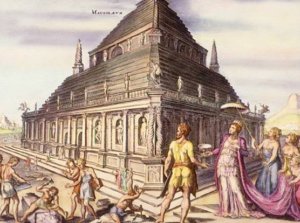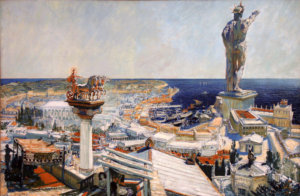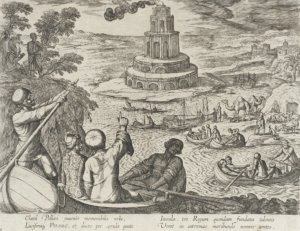A previous post highlighted three of the seven wonders of the ancient world. Though many of the features of this list have not withstood the test of time, even the ruins depict their impressive construction and influence. Spanning from Europe to Africa, these ancient structures shed light on the brilliant minds of the past and demonstrate why they would have been considered wonders of the world in their prime.

The Mausoleum of Halicarnassus
Mausolus was the king of Carnia. His wife, Artemisia, was also his sister, and upon his passing, she was grief-stricken. To honor him in death, she commissioned the construction of a regal monument to celebrate his legacy. Believed to be a combination of Lycian, Greek and Egyptian architectural styles, this three-layered building was massive, rising more than 130 feet off the ground. The tomb was decorated by four distinct sculptors, and a large depiction of a four-horse chariot resided at the top.
Though the structure was mostly destroyed in the 13th century by a devastating earthquake, the profound influence of such a magnificent tomb is found in the word “mausoleum,” which derives from the tomb of Mausolus.

The Colossus of Rhodes
The Sun God Helios was honored by the Rhodians in the form of a massive bronze sculpture. The construction of this statue reportedly took more than 12 years, and it was a costly endeavor, requiring the sacrifice of Macedonian weapons and tools left behind in a 4th-century siege. Chares, a famous sculptor, was responsible for the design and development of this statue, and it rose to an impressive height of more than 100 feet, making it the tallest statue of the ancient world.
Having only stood for about 56 years before being destroyed by an earthquake, the exact design of this statue is unknown. However, it has been determined that the statue likely stood with its legs together in order to support its impressive weight. It is also believed that the United States’ Statue of Liberty is, in some ways, modeled after the Colossus.

The Lighthouse of Alexandria
Another impressive execution of the scientific and architectural prowess of humans, the lighthouse of Alexandria was built on the island of Pharos. It was commissioned by Ptolemy I and finished around 280 B.C.E., and its construction was ordered to aid the passage of Nile River ships coming in to the city’s busy harbor. At nearly 440 feet tall, this structure was the third-largest manmade building of its time, falling behind the pyramids.
The way the lighthouse operated was a simple but effective application of reflection. Using a mirror, the lighthouse reflected sunlight by day and firelight by night; it was reported that the light from the lighthouse could be seen up to 35 miles away.
In the days of its reign, the lighthouse was highly regarded, and ancient coins have been discovered which depict the lighthouse’s image. It has been gathered from these depictions that the lighthouse featured three distinct tiers: a square base, an octagonal center, and a cylindrical top section.
Its true appearance is not known as several earthquakes between 946 and 1480 C.E. damaged and ultimately destroyed the structure. Since its destruction, fragments of the lighthouse have been discovered at the bottom of the Nile.

The Great Pyramid at Giza
Many individuals learn about ancient Egypt in school, but few have the opportunity to visit these massive structures. Of the items on this list of wonders, the Egyptian pyramids are undisputedly the most preserved. They have endured damage over time, but despite being thousands of years old, they have not lost any significant structural integrity.
The most impressive pyramid (and the one that has earned a place on the list of wonders) is the Great Pyramid at Giza. For more than 4,000 years, this pyramid was the tallest manmade structure in the world. It wasn’t until the 19th century that humans were able to construct a larger building. Though much of the pyramid’s construction remains a mystery, modern scientists believe the ancient Egyptians utilized a simple but effective strategy involving log rollers and sledges to shift the heavy stones into place.
With its religious significance as well as its ties to the afterlife, the Great Pyramid remains a remarkable example of human design and determination.
The seven wonders of the ancient world have mostly been destroyed, but their influence remains prominent. From the words we use to the structures we continue to build, the ancient builders, designers, architects, and sculptors were able to create buildings and works of art that impressed ancient civilizations as well as modern society. Though all but one of these wonders have been damaged or destroyed, their legacy and influence will remain for millennia to come.
___
Jorge J. Perez is an attorney in South Florida. He is a self-professed history buff. Visit JorgeJPerez.net often to learn more.

